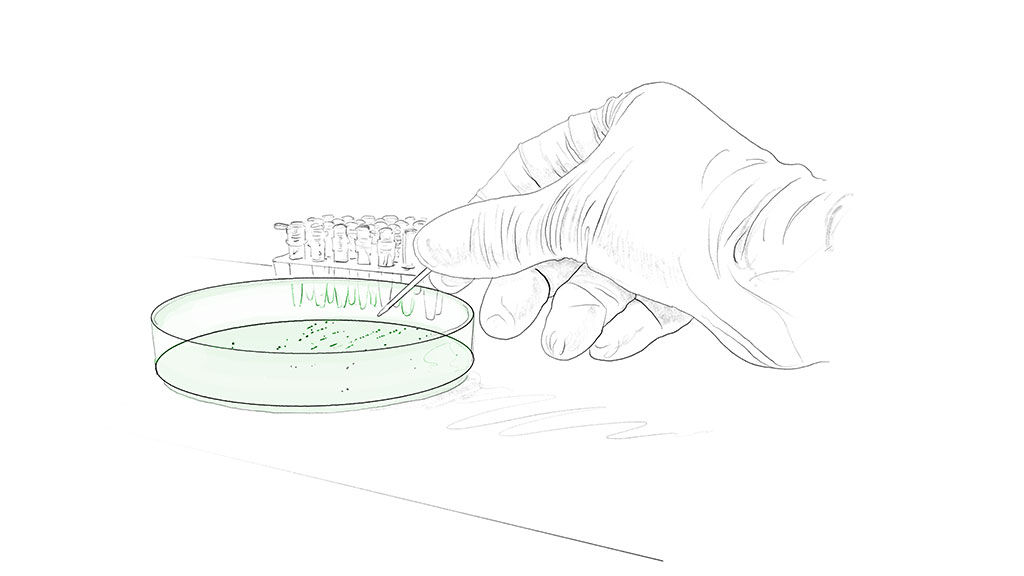Cell culture encompasses a fascinating set of techniques and methods that keep cells healthy after they have been removed from their natural tissue. The key is to create the best environment for cells to grow and proliferate.
Especially mammalian cell culture is indispensable in life sciences as a research tool in all topics related to cell biology, as model systems for pharmaceutical studies and in the biotechnological large scale production of essential therapeutics, such as the expression of recombinant antibodies. This article will give you a brief history of cell culture and an overview of its role in life sciences.
Mammalian cell culture dates back to the nineteenth century, when French physiologist Claude Bernard showed that animal cells are unable to survive in a water bath but require a suitable culture environment. This exciting finding spawned more research into cell culture systems. In the early twentieth century, Harrison demonstrated cell growth in vitro with frog nerve fibers and the over 30 year long continuous culture of chick embryo heart cells exhibited the tremendous potential of the cell culture techniques.

Industrialization of cell culture was driven by the need for polio vaccines during the 1940s and 1950s epidemics and led to the perfection of aseptic techniques, culture conditions and culture medium on large scales.
Subscribe to our Newsletter
Get all the latest updates, and learn about our advancements in antibody production.
Subscribe now
Cell culture was instrumental in the development of modern molecular biology with its breakthrough technologies like cloning, transient transfection and recombinant protein expression. It is indispensable in the cutting edge research of medicine as well as manufacture of essential pharmaceuticals of huge commercial value.
Cell culture is a technique at the heart of life sciences and biotechnology. In terms of basic research, cell culture allows the use of live cells or tissue culture as model systems for physiologic subunits of organisms to investigate the effects of reagents, toxins, radiation or microorganisms in assays, test therapeutic candidates in drug screening panels, and study cell biological phenomena such as proliferation, differentiation, senescence and cancer formation.
Regarding the manufacture of biopharmaceutical goods, cell culture of various cell types (e.g. HEK293 cells or CHO cells) is the key process that transforms simple starting materials into very complex, highly valuable products such as therapeutic antibodies (cancer drugs), peptide hormones (insulin, growth factors), diagnostic enzymes and antibodies (test kits), and vaccines. Cell and gene therapies even use the cultured cells as therapeutics (stem cells, CAR T cells).
Cell cultures are generally classified in several ways:
Primary cell culture refers to cells that are removed from a tissue and cultured until confluence, i. e. they occupy all of the culture medium. Next, an aliquot of the culture is removed and transferred into a new vessel with fresh medium to continue growth as a secondary cell culture, or subculture.
Normal cells lead to finite cell lines, because they lose their ability to proliferate after a predetermined number of generations, whereas continuous cell lines consist of immortalized cells, which proliferate indefinitely.1
Another way is to classify cell cultures according to their morphology during microscopy: fibroblastic cells have elongated shapes and grow on a substrate (adherent cells that require enzymatic treatment with e g. trypsin to remove them from the surface before seeding fresh media). Epithelial-like cells are adherent cells as well, but they are polygonal in shape and grow in patches, possibly forming monolayers. Lymphoblastic cells are spherical and grow in cell suspension, i. e. they float freely in the liquid growth medium.
Now we want to talk a bit about the side of things: What are HEK293 cells, CHO cells and other cell types actually grown in under lab conditions and what is needed to use the technique of cell culture?

In contrast to in vivo conditions, cells in culture depend on an environment that ensures cell viability. To mimic these conditions in flasks and petri culture dishes, growth media were developed at first from animal sources such as fetal bovine serum (FBS) and hence improved with inhibitors or fungal growth and supplements. Further optimization led to formulations like Dulbecco’s Modified Eagle’s Medium (DMEM) especially rich in amino acids. Some types of cells require a special extracellular matrix for growth, i. e. a 3D cell culture.
The vessels are constantly agitated and kept under a suitable atmosphere of oxygen, nitrogen and carbon dioxide and warmed to body temperature in incubators.
Aliquots of the medium are removed periodically using pipettes and centrifuges to count cells and determine cell density. As soon as the number of cells is sufficient, either subculturing is performed or downstream processes are commenced: isolation of the product of interest.
If the cells are to be stored for later use, cryopreservation and subsequent thawing are required. Additionally, ethanol is in high demand among cell culture workers – but only for cleaning and sterilizing equipment in order to ward off any contaminants, since cells in culture do not possess any kind of defense mechanisms and rely on aseptic conditions.
More about this topic: